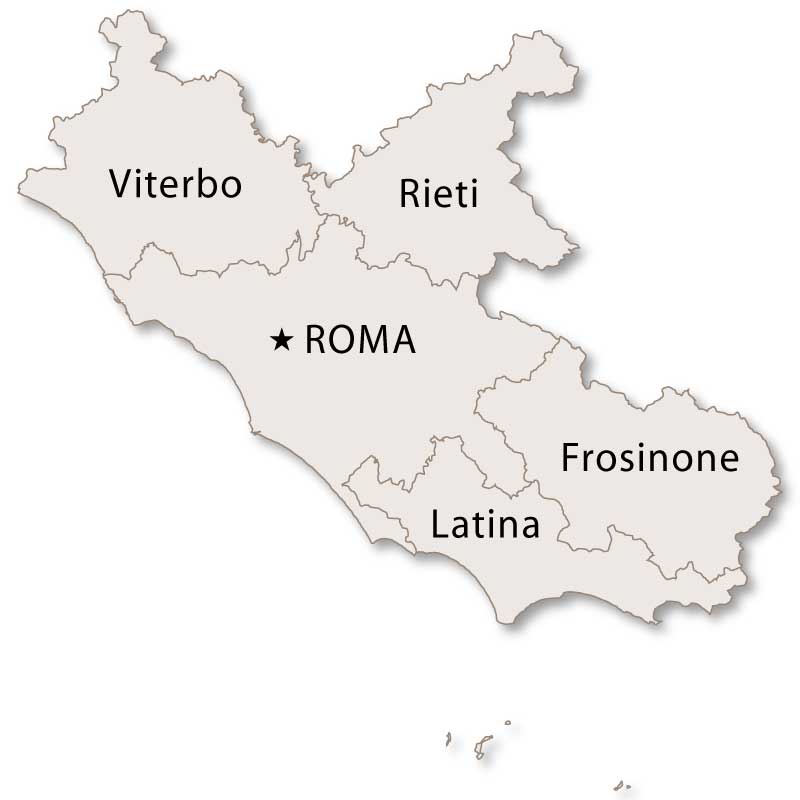
The Province of Roma is a vast and diverse area in central Italy that surrounds the famous city of Rome but reaches far beyond its iconic monuments and bustling streets. Covering coastline, lakes, hills, farmland and ancient towns, this province offers an incredible variety of experiences for travelers.
While Rome itself draws millions of visitors each year, the wider province is full of hidden treasures. From medieval villages and Renaissance palaces to volcanic lakes and sandy beaches, the province of Roma is a destination worth discovering on its own terms.

The province stretches from the Tyrrhenian Sea on the west to the Apennine foothills in the east, encompassing a wide range of landscapes. In the north lie the Sabatini Hills and Lake Bracciano, a volcanic crater lake surrounded by forests and historic towns.
To the south, the Roman coastline offers long beaches and fishing villages, while the Castelli Romani area southeast of the capital is home to vineyards, villas and crater lakes like Albano and Nemi. Rolling hills and farmlands stretch between, giving the province its richly varied character.
The Castelli Romani, or Roman Castles, is a cluster of hill towns located on the slopes of the ancient Alban Hills. Once summer retreats for Roman nobility and popes, towns like Frascati, Ariccia, Castel Gandolfo and Grottaferrata still exude elegance and tradition.
Frascati is famous for its white wines and elegant villas, while Castel Gandolfo is home to the Pope’s summer residence overlooking Lake Albano. Nemi is known for its wild strawberries and romantic atmosphere. This area is perfect for day trips or weekend escapes from the city.
Several of the province’s most scenic spots are its lakes, formed by ancient volcanic activity. Lake Bracciano, with its clear waters and limited motorboat use, is ideal for swimming, sailing and kayaking. The lake is bordered by the charming towns of Bracciano, Anguillara Sabazia and Trevignano Romano.
Further south, Lake Albano and Lake Nemi are nestled in forested volcanic craters, offering walking paths, panoramic viewpoints and peaceful lakeside cafes. These lakes are part of the Regional Park of the Castelli Romani, which protects the natural and cultural landscape of this volcanic region.
The western edge of the province borders the Tyrrhenian Sea, where long sandy beaches and fishing towns line the coast. Lido di Ostia is Rome’s seaside district, popular in summer for its beaches and beach clubs. North of Ostia lies Fregene, a fashionable destination for Roman weekenders.
Further south, towns like Anzio and Nettuno are rich in history and maritime tradition. Anzio was once the site of an imperial Roman port and later a crucial location in World War II. Nettuno offers medieval architecture, a bustling harbor and beautiful beaches. Both towns serve as ferry terminals for the Pontine Islands in summer.
Scattered throughout the province are ancient towns filled with charm, art and archaeology. Tivoli is one of the most famous, known for Villa d’Este with its spectacular fountains and gardens, and Villa Adriana, the vast imperial residence of Emperor Hadrian.
Palestrina, perched on a hillside, offers a majestic archaeological museum built into the remains of the Temple of Fortuna. Subiaco, deep in the eastern hills, is home to two important Benedictine monasteries founded by Saint Benedict himself. These towns offer history, beauty and a sense of timelessness.
The province of Roma has long been a place of spiritual importance. In addition to its proximity to the Vatican, the countryside is dotted with monasteries, shrines and pilgrimage trails. The Via Francigena, a medieval route to Rome, passes through the area and is still walked by pilgrims today.
Subiaco’s monasteries, the Sacro Speco and Santa Scolastica, are built into a cliffside and filled with centuries-old frescoes and silence. In Grottaferrata, the Abbey of San Nilo preserves Byzantine religious tradition and offers a peaceful place for contemplation and study.
Beyond its historic landmarks, the province of Roma is a land of flavors and rural tradition. Local cuisine varies by area but shares a focus on fresh, seasonal ingredients. You will find porchetta in Ariccia, artichokes in Ladispoli, mushrooms in the hills and fresh fish along the coast.
The wines of the Castelli Romani, especially Frascati, are well known, and wine tasting is available at many local vineyards. Olive oil, cheese, honey and bread are also produced throughout the province, often sold at weekly markets and village festivals celebrating the agricultural calendar.
The province is rich in green spaces and regional parks that protect biodiversity and offer outdoor opportunities. The Parco Regionale dei Monti Lucretili in the northeast includes rugged mountains and forests, ideal for hiking and wildlife observation.
The Parco dell’Appia Antica, beginning in the capital and stretching into the countryside, follows the ancient Roman road past aqueducts, tombs and ruins. The coast also features nature reserves like the WWF-managed Oasi di Macchiagrande, preserving coastal dune ecosystems and native bird species.
The province of Roma is well connected by trains, buses and roads. Many towns such as Tivoli, Frascati, and Bracciano are reachable by train in under an hour from Rome. Coastal destinations like Anzio and Nettuno are also accessible by regional rail.
For more remote villages and natural areas, a rental car provides greater flexibility. The best times to visit are spring and early autumn, when temperatures are mild and festivals abound. Summer is perfect for beach trips and lake swims, while winter offers a quieter and more intimate experience.
While the city of Rome captures the imagination of the world, the province of Roma is a destination of its own. Its diversity of landscapes, towns, and cultural traditions offers something for every kind of traveler seeking depth, beauty and authenticity.
Whether you are tasting wine in Frascati, walking Roman roads, exploring lakeside villages or resting in peaceful monasteries, the province of Roma invites you to explore beyond the capital and discover the soul of Lazio’s countryside.

More Details



